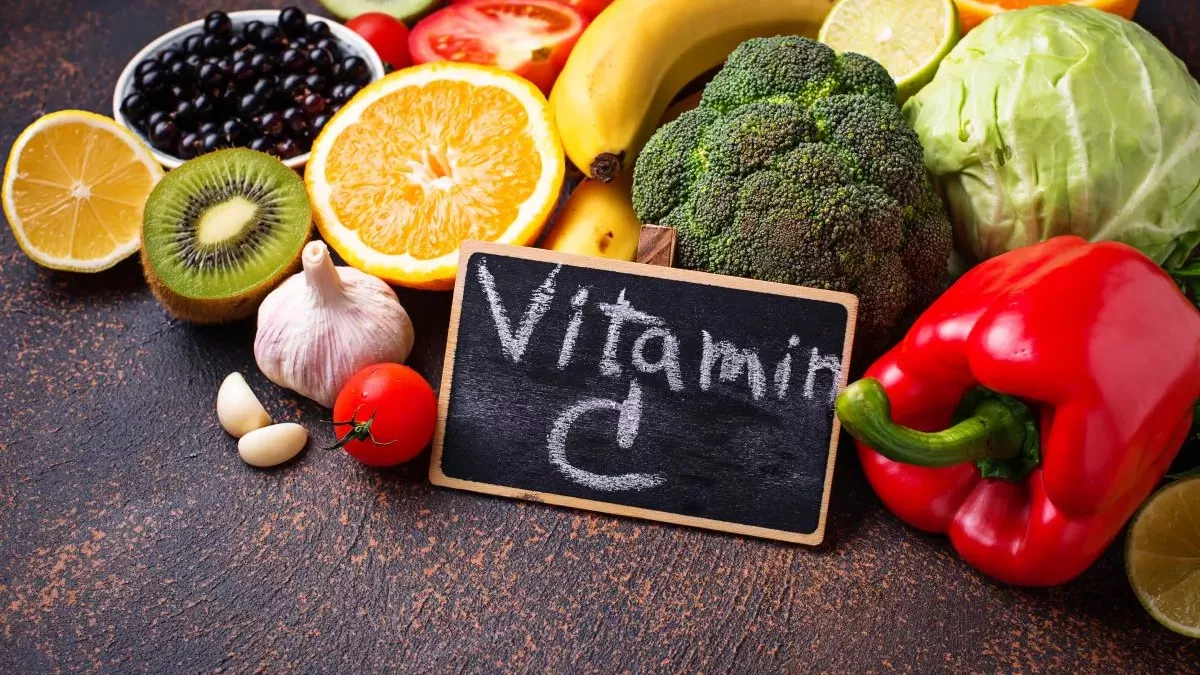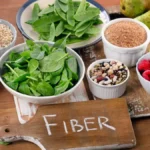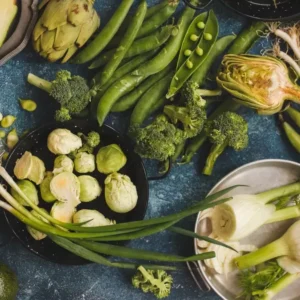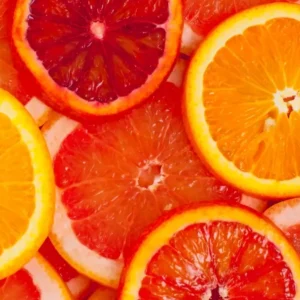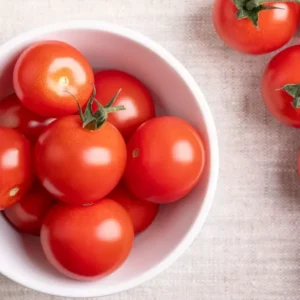Verified on 11/12/2023 by PasseportSanté
Vitamin C, or ascorbic acid, is a water-soluble vitamin present in large quantities in the body. Since it does not know how to synthesize it or store it, it is essential to provide enough of it on a daily basis to stay in good health. Vitamin C, best known for its antioxidant power, has many roles in the body.
Characteristics of vitamin C:
- also called ascorbic acid;
- is found in fruits and vegetables;
- helps fight against oxidation and strengthen the immune system;
- acts in synergy with vitamin E, selenium and zinc;
- promotes iron absorption.
Vitamin C: what are its benefits for the body?
Antioxidant
Vitamin C has powerful antioxidant power. Combined with other antioxidant molecules such as vitamin E, sélénium or zinc, it helps neutralize excess free radicals in the body. As a result, ascorbic acid protects against oxidative stress and premature cellular aging. This antioxidant action is also involved in protecting the body against certain pathologies such as cancer, cardiovascular diseases or even neurodegenerative pathologies.
Brain Functioning
Vitamin C allows the production of neurotransmitters in the brain: dopamine, norepinephrine, adrenaline, etc. It is therefore essential for proper brain function. In addition, its ability to fight against oxidation could be useful in slowing down the occurrence of neurodegenerative pathologies (Alzheimer For example). Finally, the vitamin C transport system in the brain plays a role in the occurrence of degenerative diseases, which makes it a potential area of treatment.
Immune system
The concentration of vitamin C is particularly important in the cells providing the body’s immune defenses. Indeed, it participates in the production and renewal of white blood cells and thus helps the body to defend itself against internal and external pathogens.
Foods rich in vitamin C
20 fruits and vegetables rich in vitamin C (ascorbic acid)
|
Food |
Portions |
(mg) |
|
Guava |
125ml (1/2 cup) |
199 mg |
|
Red pepper, raw or cooked |
125ml (1/2 cup) |
101-166 mg |
|
Green pepper, raw or cooked |
125ml (1/2 cup) |
54-132 mg |
|
Papaya |
½ papaya (150 g) |
94 mg |
|
Kiwi |
1 medium fruit (75 g) |
71 mg |
|
Orange |
1 medium fruit |
70 mg |
|
Jus d’orange |
125ml (1/2 cup) |
43-66 mg |
|
Mango |
1 medium fruit (200 g) |
57 mg |
|
Broccoli, raw or cooked |
125ml (1/2 cup) |
42-54 mg |
|
Cooked Brussels sprouts |
4 choux (85 g) |
52 mg |
|
Strawberries |
125ml (1/2 cup) |
52 mg |
|
Pink or white grapefruit juice |
125ml (1/2 cup) |
36-50 mg |
|
Chou-rave cuit |
125ml (1/2 cup) |
47 mg |
|
Pink or white grapefruit |
½ grapefruit |
42 mg |
|
Vegetable juice |
125ml (1/2 cup) |
35 mg |
|
Pineapple |
125ml (1/2 cup) |
34 mg |
|
Cantaloup |
125ml (1/2 cup) |
31 mg |
|
Carom |
1 medium fruit (90 g) |
31 mg |
|
Raw green peas |
125ml (1/2 cup) |
31 mg |
|
Cooked cauliflower |
125ml (1/2 cup) |
29 mg |
 Receive every day
Receive every day
advice from our experts
to take care of you

Vitamin C: dosage, uses, daily needs
|
Nutritional References for the Population (RNP) |
|
|
Babies 0-6 months |
20 mg* |
|
Babies 7-12 months |
20 mg* |
|
Babies 1-3 years old |
20 mg |
|
Children 4-6 years old |
30 mg |
|
Children 7-10 years old |
45 mg |
|
Adolescents 11-14 ans |
70 mg |
|
Adolescents 15-17 ans |
100 mg |
|
Adults 18 years and older |
110 mg |
|
Pregnant women |
120 mg |
|
Breastfeeding women |
170 mg |
In smokers, the need for vitamin C is increased, it should be at least 130 mg per day.
Food supplements based on ascorbic acid
Ascorbic acid is found in many dietary supplements. most of these supplements contain 1000 mg of vitamin C. They are often recommended for their anti-oxidant role and to stimulate the immune system. The dosage of 1000 mg must be respected because beyond that there is a risk of overdose. In all cases, seek the advice of a doctor.
Vitamin C deficiency and overdose: what are the side effects?
True vitamin C deficiency is responsible for scurvy. It is extremely rare today in developed countries but can cause edema and hemorrhage which can cause death if not treated quickly. Vitamin C deficiency is much more common and can lead to fatigue, general asthenia, a tendency to get sick easily or even a loss of appetite.
Consequences of a dose of vitamin C greater than 1000 mg
The maximum recommended intake of vitamin C is 1000 mg in addition to the recommended intake, or 1100 mg in healthy adults. Beyond this dose, vitamin C can promote the formation of kidney stones from oxalates, hemochromatosis or even the occurrence of digestive disorders (diarrhea, stomach cramps, etc.).
Interactions with other nutrients
The presence of foods rich in vitamin C during a meal increases the assimilation of iron contained in that same meal. It is interesting to combine sources of vitamin C and iron.
Vitamin C acts in synergy with vitamin E, selenium and zinc and helps fight against oxidation in the body.
Chemical properties
The crude formula of vitamin C is C6H8O6, its molar mass is 176.1241 g/mol. It is a water-soluble vitamin that is extremely sensitive to heat and light, hence its great fragility in cooking. In the body it is found in the form of ascorbic acid or sodium or calcium ascorbates. Ascorbic acid is a reducing diacid with strong antioxidant potential.
Vitamin C is a very active enzyme co-factor and involved in numerous metabolic reactions: hydroxylation, carnitine synthesis, collagen synthesis, etc.
Nutrient History
The name ascorbic acid comes from Greek and means “anti-scurvy”, scurvy being a disease linked to a deficiency of vitamin C and whose symptoms have been known since the 13th century. It wasn’t until the 1700s that scientists realized lemon’s ability to cure disease. In the 1930s, vitamin C was first synthesized by WN Haworth, who received a Nobel Prize in Chemistry for his essential discovery. Since then, the roles of vitamin C in the body have continued to be the subject of interesting scientific discoveries.
Our dietitian’s opinion
A sufficient intake of vitamin C is essential for the health of the body. Fortunately, vitamin C is found in good quantities in many fruits and vegetables: guava, pepper, kiwi, broccoli, citrus fruits, red fruits, etc. To take full advantage of its virtues, we recommend putting fruits and vegetables on the menu at each meal, also remembering to eat them raw when possible. In fact, cooking at high temperatures and/or prolonged periods can destroy part of the vitamin C present in foods!

Dietitian Nutritionist
June 2018

Dietitian Nutritionist
December 11, 2023, at 9:43 a.m.
96% Readers found this article helpful And you ?
Was this article useful to you?




